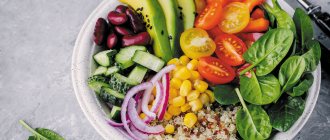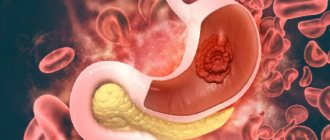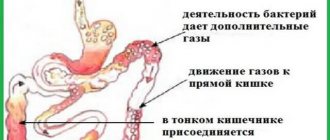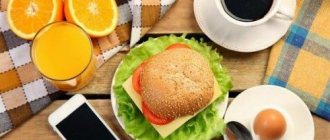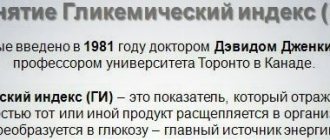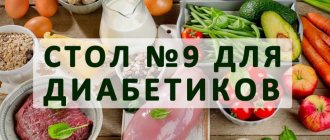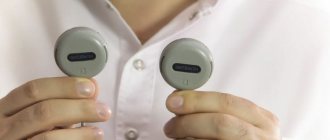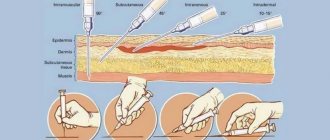Bariatric surgery is the most effective treatment for obesity and related diseases. However, if you do not follow the principles of proper nutrition after bariatric surgery, then all the doctor’s efforts may be in vain.
At first, changing long-standing eating habits can be difficult. To get into excellent physical shape, you will need to be persistent and follow all the doctor’s instructions. Specialists of the Federal Scientific and Clinical Center FMBA are ready to provide professional assistance to each patient at any stage of treatment.
Principles of a balanced diet after bariatric surgery
It is important to remember that bariatric surgery is surgery on the gastrointestinal tract. It changes the functioning conditions of the digestive system, and nutrition after surgery has some features. Your doctor will provide you with an individual diet plan.
General recommendations to follow:
- Protein is the main component of the diet. You must consume at least 60 g of protein per day. It is found in sufficient quantities in meat (turkey breast, chicken, fish fillet, beef, pork), low-fat cheese, cottage cheese, eggs, and peanut butter.
- Don't skip meals. Frequent, small meals will prevent stomach overfilling and improve metabolic processes.
- Eat only at the dinner table, do not rush.
- Place small portions on plates. Cut food into small pieces and chew thoroughly and slowly. Use small dishes and baby spoons to avoid overeating. Stop as soon as you feel full.
- Drink more fluids throughout the day (6-8 cups). Avoid carbonated, high-calorie drinks and caffeine. Drink at intervals of 30 minutes before or after meals, this will help prevent nausea and vomiting.
- Take a daily vitamin and mineral supplement (multivitamin, calcium citrate), but check with your doctor first. Additionally, vitamins B12, D, and iron may be required.
Remember that a balanced diet after bariatric surgery is not just a diet, but a new way of life. In order to lose weight, healthy habits must become an integral part of your life.
Foods you should not eat before endoprosthetics
Some foods enhance the inflammatory response, so it is recommended to exclude them from the diet at the preparatory stage as early as possible. These include:
- products containing refined sugar (sweets);
- fatty meats and other products containing saturated fatty acids;
- ready-made cookies and cakes (they contain dangerous trans fatty acids);
- alcohol.
If you want the artificial joint to take root, do not eat cakes and pastries.
Diet after bariatric surgery
As with other surgical procedures, the diet after bariatric surgery is strictly limited for several weeks. This is necessary to reduce the frequency of possible complications and adapt the gastrointestinal tract to changes.
1-2 second day after surgery. The first step is “clean liquids”. Drink no more than 100 ml of liquid (1/2 cup) at a time - in small sips.
- Water
- Bouillon
- Decaffeinated coffee
All liquids should be at room temperature.
3-21 days after surgery. The second step is “fortified liquids”/protein mixtures.
Gradual increase in the volume of fluid consumed up to 150 ml at a time.
The calorie content of the daily diet is about 1000 kcal, protein consumption is at least 60 g per day.
- Low-fat fermented milk products (
- Low-fat unsweetened yogurt
- Chicken, turkey, beef, fish broths
- Liquid porridges made from rice flour, wheat, oatmeal
- Heavily crushed seasonal fruits in the form of liquid purees (no sugar)
- Diluted protein mixtures in the form of cocktails
- Unsweetened teas
- Protein mixtures.
Contents for 1 meal: protein no less than 25 g carbohydrates no more than 5 g fat no more than 1 g
3-6 weeks after surgery. The third step is “all food in the form of a homogeneous puree.”
The volume of food consumed increases to 200 ml or 1 cup. The following crushed products are added to the diet:
- Baby vegetable and fruit purees without sugar
- Baby chicken and turkey purees
- Low-fat cottage cheese and curd cheeses of liquid consistency (
- Eggs (1 yolk per day)
- Hummus, tofu
- Puréed vegetable mixtures with the addition of white meat chicken or turkey
- Low-fat fish
7 weeks after surgery and beyond. Fourth step.
The volume of food consumed is no more than one cup (200 ml), a portion of meat food is no more than 60 grams. The following products are added to the diet:
- Well cooked pasta and rice
- Almost all foods are allowed, excluding tough beef, sweet and fatty foods
The main rule: Proteins are the main part of nutrition! (at least 60 g per day)
Energy requirement
Energy requirement is approximately 1/3 higher than in healthy people, about 30-40 kcal/kg/day:
- Weight 50 kg = 1500-2000 kcal;
- Weight 60 kg = 1800-2400 kcal;
- Weight 70 kg = 2100-2800 kcal;
- Weight 80 kg = 2400-3200 kcal;
- Weight 90 kg = 2700-3600 kcal.
A few simple rules:
- Remember that you have no feeling of hunger and satiety occurs earlier;
- Chew your food well, eat slowly, not too hot and not too cold;
- Do not drink while eating;
- Monitor your weight daily;
- Food should be easily digestible and complete;
- High-quality foods rich in vitamins and minerals are important;
- Nutrient ratio: 55% of the energy value should be carbohydrates, 30% fat and 15% protein.
Well tolerated:
- Fats Boiled meat, grilled meat, fish, fresh butter, margarines, sunflower oil, yogurt, low-fat cheese, 1 tablespoon of sour cream before the main meal, soft-boiled eggs.
- Salads Carrot, green, cucumbers, tomatoes with a small amount of marinade, sour cream or sunflower oil.
- Vegetables Broccoli, cauliflower, kohlrabi, wax beans, spinach, carrots.
- Some varieties of sausages
Avoid:
- Concentrated sweet and flour dishes;
- Meat broths;
- Sweet drinks;
- Milk and dairy products;
- Fried;
- Vegetables and fruits rich in fiber (for example, oranges);
- Smoked;
- Peppered;
- Alcohol.
How does the gastrointestinal tract function after gastric resection?
The stomach takes part in hematopoiesis; the cells of the gastric mucosa produce intrinsic Castle factor, an enzyme that converts vitamin B12 from food into an absorbable form. Without intrinsic factor, vitamin B12 is not absorbed and does not enter the bloodstream, but is excreted in the feces. The source of vitamin B12 is animal food; there are no plant sources of B12. For more information about B12 deficiency anemia, read the article in the healthy lifestyle “Red vitamin and anemia (if blood is on a fast ration)” or on the website.
The first blow from food intake is the intestines, primarily the small intestine - this is the most extensive organ of the human digestive system. In it, under the influence of pancreatic enzymes and bile of intestinal juice, the main processes of digestion occur, transforming food into simple components that can be absorbed by the body, determine the state of metabolic processes and, ultimately, human health.
Pancreas. It produces 1.5-2.0 liters of pancreatic juice, which has a pH of 7.5. The main part of pancreatic juice is pancreatic enzymes (trypsin, chymotrypsin, elastase, carboxypeptidases, pancreatic lipase, phospholipases, etc.) Pancreatic juice contains a huge range of enzymes that digest almost all components (macronutrients) of food consumed by humans. These enzymes are produced only in the pancreas. In practice, the pancreas takes over the functions of the stomach in digesting protein foods.
Large intestine - carries out residual final digestion of food, secretion and absorption of water, electrolytes, gases, formation and evacuation of feces.
An important role is played by intestinal microflora, the enzymes of which utilize digestive enzymes secreted by the digestive organs. The breakdown products of enzymes and bile acids are absorbed into the blood and returned to the digestive organs for the re-synthesis of digestive enzymes and acids.
Eating in restaurants and during social events
At many social events, food takes center stage. Remember that portions at various events and restaurants can be quite large. It usually takes time to get used to eating out at restaurants or attending events such as weddings and dinner parties.
- If you've managed the appetizer, you may find that you need to take the main course with you.
- If you miss an appetizer, try eating only half of your main course and take the rest with you. You can also share the main dish with a friend.
- You may have to choose between a small portion of soup or a drink to stay within your liquid limit. Or you can take just a few small sips of both.
- If you want to grab dessert, you can take it with you and save it for later.
to come back to the beginning
Tracking food and fluid intake
After gastrectomy surgery, you may feel fuller more quickly or have other changes that affect your food intake. Keeping a log of the foods and drinks you consume will help you understand which foods and portion sizes are best for you. It will also make sure you are getting enough calories.
In the journal of consumed foods and drinks:
- record all foods eaten and liquids drunk. Record: the time you eat or drink;
- quantity (portion) and type of product or drink;
- the number of calories in a product or drink;
- Do you feel like you've eaten too much?
Below is an example of a food and beverage log. There is also a blank journal form at the end of this material that you can use.
| Time | Serving Size | Description | Calories | Presence of symptoms |
| 7:00 | 4 oz (120 ml) | Apple juice | 60 | No |
| 8:00 | 1 extra large jumbo egg 5 oz (150 ml) | Scrambled eggs Mashed potatoes | 100 160 | No |
| 10:00 | 6 oz (180 ml) | Yogurt | 105 | No |
| 14:00 | 5 oz (150 ml) 4 oz (120 ml) | Mashed Potatoes Vanilla Pudding | 160 110 | No |
| 16:00 | 1 very large egg (jumbo) | Scrambled eggs | 100 | No |
| 18:00 | 6 oz (180 ml) 5 oz (150 ml) ¼ cup ¼ cup | Mashed Potatoes Boiled Butternut Squash Stewed Chicken Gravy | 192 75 58 50 | Extremely full, unable to finish eating |
| Daily intake 1130 calories |
Weight tracking
It is also very important to monitor your weight. Weigh yourself every 3-5 days. It is advisable to weigh yourself at the same time of day each time. Make sure you wear the same amount of clothing each time. If you notice that you are losing weight, make an outpatient follow-up appointment with a clinical dietitian dietitian.
Determining the quantity of products
To accurately measure food quantities, use measuring spoons, measuring cups or food scales. You can also use the guidelines shown in Figure 1 to roughly determine the quantities of certain products.
Figure 1. Guidelines for determining portion sizes
Finding Calorie Information
Information about the calorie content of packaged products is provided on the label, in the nutritional value table (see Figure 2).
If a food does not have a nutrition label, you can find calorie information on nutrition websites such as CalorieKing.com or MyFitnessPal.com. You can also download the MyFitnessPal app on your smartphone.
Figure 2. Where to look for calorie information on the Nutrition Facts label.
to come back to the beginning

